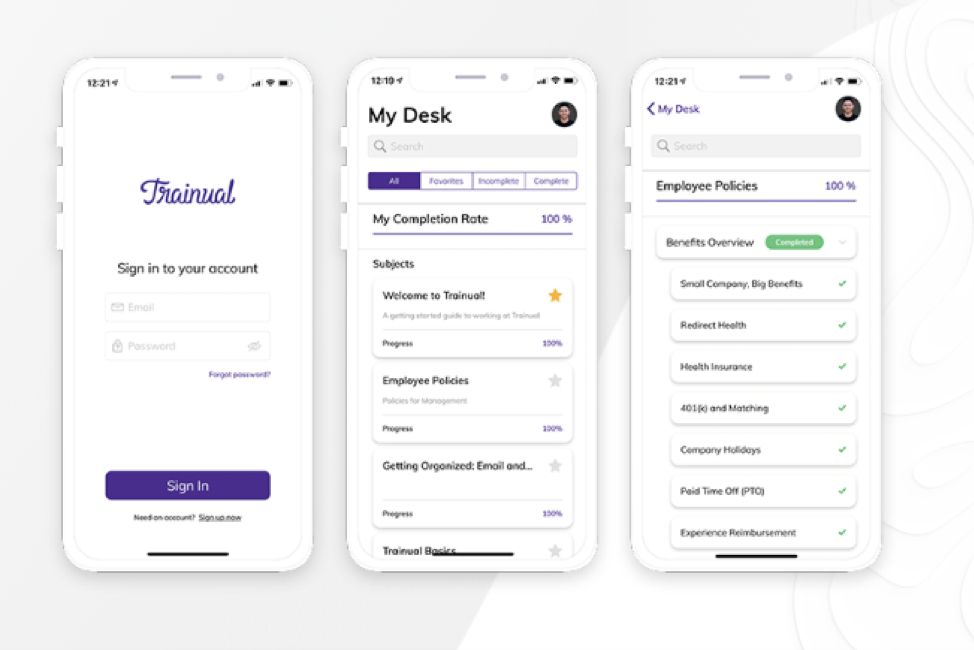
by Guest | Feb 21, 2020 | Community, sponsor
The Arizona Commerce Authority is proud to
once again sponsor PHX Startup Week, and we can say with confidence that this
event is an exciting kickstart to the suite of signature innovation-focused
events scheduled for 2020.
So, there is no better place than this to
announce some exciting venture attraction opportunities coming to Arizona.
This spring, the ACA, in partnership with
Stout Street Capital, will host the largest venture capital conference in state
history. UNMET Arizona
2020 will feature 100 fast-growing tech companies that will have
access to more than 120 institutional investors from across the country.
The UNMET Conference will serve another
tool helping to facilitate increased deal flow, furthering Arizona’s reputation
as the best place to test, launch and scale new ideas and new technologies.
This reputation of
Arizona’s vibrant innovation ecosystem has been cemented under the leadership
of Governor Ducey, who has consistently advanced policies that embrace emerging
technologies and serve as a draw for new venture capital making its way to
Arizona.
Our state posted a
record-breaking year in 2019, with more than $1.1 billion invested by venture
capital firms in Arizona-based companies. The investment represents 206 deals.
Clearly, Arizona’s innovation ecosystem is humming with big ideas and bold
entrepreneurs. And our growing venture attraction portfolio is helping those
ideas commercialize.
UNMET Arizona 2020 will be held May 12-14 at
the Scottsdale Center for the Performing Arts. As part of the event, we will be
celebrating the graduates of the ACA’s Venture Ready Accelerator business mentorship
program, which will feature a graduation showcase, reception and kickoff gala.
Arizona is home to visionary entrepreneurs and industry-leading companies at the forefront of cutting-edge technologies. We’re confident the momentum will continue, and together, we’ll continue to make Arizona a national model of startup success.
This blog post was written and submitted by Arizona Commerce Authority. Thank you to the ACA for their generous support of PHX Startup Week 2020.

by Guest | Feb 21, 2020 | Community, sponsor
You may have heard that question at some point when you were building your business or starting up. USP stands for Unique Selling Proposition.
In very simple terms, why should I buy from you versus anyone else? What makes you different? Unique?
After presenting the “ ABC’s of Starting a Business workshop” for years, presented by SCORE Greater Phoenix, it is evident how many people do not have a clear focus on what their business is and who problems they solve and to whom are they solving those problems for. We hear extra filler junk, such as. “I am like the UBER of XXX.” So, what I heard is that you have a billion-dollar valuation, are in the debt over a billion dollars and have not been profitable and probably will never be profitable. Not good.
So how can you create your own very compelling USP?
Simple. Follow this simple formula and create your own USP. Think of it as your elevator pitch.
First, write down your target marketing Now you may have more than one, but not more than three. Why? Because if your message is trying to be everything to everyone, no one cares, and no one wants to hear it. They want someone to solve their problems-not the world’s. Be specific on who your market is. If it’s dentists, then what kind of dentist? Orthodontist? Periodontist? General? Oral? Etc.
Be specific. “My company works with orthodontists.”
Next, write down at least 25 problems your target customer has, then write down 10 more. This will really help in your business down the road. Identify the top 3 problems your target market has based on your list. How do you know what the top 3 problems are? Hopefully, you know why your customers are doing business with you. If not, ask them what problems/challenges your product/service solves for them. If you don’t have customers yet, then meet with a mentor to have them help you find those top 3 challenges. You also may know what 3 challenges you want to solve for your customers-but it must be in alignment with THEIR needs. I.E. Orthodontists problems are; patients not showing up for appointments, potential clients not having insurance to get braces (cost) and finding good staff.
Now write down at least one solution to each one of the problems you outlined in the last step. Be specific. Using our dentist as an example; send out email, text and voice mail reminders for the appointment, providing another insurance solution if they don’t have insurance, use a systematic process to hire great staff.
Let’s put your USP all together.
“My company works with elite orthodontists who have challenges obtaining new patients and attracting high level staff. We help them develop acquisition and retention strategies to build their practice and their team.”
You may be thinking, how did I get that USP from the exercise. It’s simple. THEIR problem is getting new patients in because they don’t have insurance, keeping patients and getting new staff. The USP says that in a language that is speaking to the orthodontist-not to anyone else. Now, if another type of dentist heard this, would they want to know more from you? Absolutely. You can alter your USP to your market.
I.E. “My company works with elite dentists who have challenges obtaining new patients and attracting high level staff. We help them develop acquisition and retention strategies to build their practice and their team.”
See how that works. You must speak to your audience. It’s NOT about you. It’s about who you serve, what are their problems and how are you solving them.
Stop being the Uber, Apple, Tesla, Google, or whatever other company you want to compare yourself to. They have their USP. Here are a few.
- Uber: Ride when you want, where you want
- Apple: We provide a lifestyle with our products
- FedEx: When your package absolutely, positively has to get there overnight
- Coke: The real thing
- Google: Access the world from your fingertips
You are NOT them. They have established themselves in the market, you are working on establishing yourself.
Speak to your audience, be unique, be you. They do not have to define their market; it has already been defined.
Create your USP today. Be clear.
This Blog is provided by SCORE Greater Phoenix, Steve Feld a SCORE Certified Mentor.
SCORE provides free one-on-one mentoring for entrepreneurs and small businesses, as well as free or low-cost workshops for small businesses in the Phoenix area throughout the year. Visit GreaterPhoenix.Score.org for information or contact Joyce Keane, Chapter Vice-Chair at [email protected].

by Guest | Feb 21, 2020 | Community, sponsor
You may have the most lucrative product or service, but how do you move from no one knowing about it to achieving great success in business? Networking for your small business is an integral part of marketing and promoting what you offer. Networking is the next step of branching outside of the office, meeting new people and forming new relationships.
Networking can be a cost-effective way to find meaningful connections for you and your business. Not all networking for your small business is the same. There are varying types of networking events. Some events consist of open networking, which allows attendees to mingle and have conversations. It is important in open networking events that you don’t do all the talking. To learn more about other attendees’ businesses, ask more questions before you share about yourself. Active listening and asking questions tells the other person you’re engaged in what they have to say.
Forming a relationship is more valuable than exchanging business cards when networking. There are more organized networking groups, often called leads or referral groups. These groups tend to meet often, usually weekly, and are more structured. These groups include an agenda and introductions of each member’s business. Often these groups emphasize active participation by setting requirements for all members to continually pass along business leads. Some networking groups also have a business spotlight, which highlights a member’s business for that week.
Utilizing this spotlight, it is a perfect opportunity to share in-depth details about your business and share what type of connections you are looking for. The old adage “It’s not what you know, but who you know” is absolutely true when it comes to building a successful business through networking. To grow your small business quickly, you will need to have a strong source of relevant connections in your network whom you can call on when you need them. Networking can open the door to talk to highly influential people you wouldn’t otherwise be able to easily talk to or find.
Attending a new networking group can be daunting. When planning out your calendar for networking events, especially ones you are trying for the first time, think ahead of who you are trying to connect with. Meeting every single member in the room is not manageable, especially at an open networking event. Walking away with two or three new strong connections is far more valuable. To continue to grow relationships, plan to follow up with all new connections immediately. Send an email, call them and, potentially, set up another time to continue the conversation. To be successful with networking, connections must be mutually beneficial.
Be reciprocal by introducing your new connection to your network. Finding the right networking group requires commitment. Start your new year right by attending a new networking group each week for the next month. Allow yourself time to find the networking group that works best for you and your business. Once you find that right network, the growth of your business is sure to come.
This article was written by Jodi Towns, ASBA Director of Partnership Development & Marketing.
[email protected] (602) 306-4000

by Guest | Feb 17, 2020 | Community, sponsor
Have you ever left something behind? Maybe you left your phone at home (though probably not for very long). Maybe you left a tablet, or even your laptop, in the back seat pocket on an airplane. Doubly guilty. But have you ever left behind a critical part of your business? Like your website perhaps?
Think about this: have you ever seen a really amazing service with a really terrible website? The chances that you hired them is very unlikely. In fact, 75% of consumers admit to making judgements on a company’s credibility based on the company’s website design. Yes, web design. This isn’t 2001 where people will just be impressed you have a website. Welcome to 2020. This next decade, your business will be left behind if you aren’t on top of your online storefront. In all honesty, the clients you have now, will very likely forget about you completely if your web presence is unremarkable.
Are you currently wondering if social media counts as “web presence” for your businesses success in 2020? Yes…and no. If your Facebook page is a ghost town, they will forgive you and tell themselves you have too much business to worry about your company’s Facebook profile. If your Instagram does not have one professional image on any of your squares, they won’t blink an eye, “Instagram is just for Influencers, anyway,” they will say. “It’s not for real businesses.” But that’s where they will end with giving you a pass for an incomplete web presence.
If your potential clients happen to tap your link on Instagram or click your URL on Facebook to find out more – what will they find there?
What if a potential client gets a text from a friend recommending your business? They hop out of their messages to surf their mobile browser for your website. Do they find a well designed, mobile-ready online storefront they want to do business with? It better be good, and it better be attention grabbing the very second they click on your URL. Why? Studies show that potential customers will decide to stay on your site or jump ship, within the span of 5 seconds. Is your mobile site that good?
It’s general knowledge in our world that 57% of internet users say they won’t even recommend a business with a poorly designed website on mobile. Mobile. You are going to lose over half of your business if your website is not mobile-ready. And guess what? 60% of small businesses still do not have a mobile-friendly site! In other words, if your website looks the same on a desktop as it does on a phone, it is not mobile-ready. The mobile visitor to your site should not have to pinch a picture bigger, or turn their phone to the side to read the font, or even scroll to understand what you can do for them. Make it simple, make it clear, make a functioning mobile site so you don’t lose most of your potential referrals.
Friends, we aren’t beating around the bush. You need to have your mobile site up and running tomorrow! You can get started today ! The conversion is greatly in your favor. Want the numbers? 88% of consumers who search for a type of business on a mobile device call or go with that business within 24 hours. Where else are you going to get those results? Even paid ads will not come close to the return you will get on your own mobile-ready site.
Your website is your online storefront which, in 2020, is most likely your first chance to make a first impression. This is the store window of your company. This is your potential client’s first welcome into your business. When you get this right, you reduce friction and make it easier for your ideal clients to find you and book your services.
Whether you are a start-up, a photographer, a business coach, an interior decorator, or anything in between – you have competition, and you need a way to stand out from the crowd. Let your website do the talking for you, even before you meet your client for the first time. If you are feeling convicted that you have forgotten about your website for too long, let Showit help you to make a beautiful, on-brand website. And trust us, it will look great on mobile, as well as desktop.
Make that 57% of judgmental website visitors recommend your business without thinking twice.
Face it, everyone is occasionally forgetful. Forgetting a device may cost you a few dollars to replace. But forgetting to pay attention to your online presence is neglecting a key element of your business Losing customers because they are having a negative experience with your website will cost you, potential clients, not to mention thousands of dollars in business. You cannot afford to forget about your online storefront any longer. Your website is the key to running a successful business in 2020.
This blog was written and provided by ShowIt, a generous sponsor of PHX Startup Week 2020.

by Guest | Feb 14, 2020 | Community, sponsor
The biggest and toughest question every entrepreneur faces is “How much money do I put where, when and why?” At the onset of a business venture that dilemma is generally due to limited cash flow paired with overhead expenses. Later, as a business is established and profitable, the money dilemma stems from decisions about how to best save or reinvest any profits. While the latter is a more appealing dilemma than the former, both are rooted in the same quandary: how to make business & personal financial decisions based around objective advice from professionals.
For most business owners, they assume when they launch their business, they’ll be able to sell it later for enough profit to fund their retirement or next big venture. The reality is that less than 4% of US companies surpass $1mm in annual revenue, making the likelihood of a sale that funds retirement exceedingly low. To protect against this reality, entrepreneurs must learn to compartmentalize their future financial plans and commit time to plan for multiple possible eventualities.
Business success often requires focused attention on a singular purpose, and the process of planning is not meant to divert that focus. Rather, sound capital decisions happen where vision meets understanding. Planning is, therefore, envisioning a possible future with consideration given to the inputs that helped you get there. Clarity of choice helps you understand what is at stake and therefore what is at risk. This understanding is grounding and necessary when big decisions must be made.
So why all the talk about planning? Simple; whether you are raising capital or funding operations from cashflow, business decisions are most often rooted in decisions around finance. Owners’ personal and business balance sheets are often highly intertwined, especially for early-stage businesses or when you are using personal resources to fund the company. In my experience, the better the owner understands the relationship between their business and personal finances, the more opportunity they have to succeed. Planning is simply the embodiment of gaining this personal knowledge and perspective and in my view, a critical part of the path to financial success.
So who does a business owner align themselves with for such advice? What should it look like, and how and when is it best consumed? Seasoned successful entrepreneurs are no stranger to the constant solicitation of their capital. Qualified tax advisors, investment professionals, and consultants are all vying for time and wallet share and all bring a cadre of ideas and opinions about how and where to place scarce resources. This makes knowing who to turn to for help one of the single biggest challenges entrepreneurs face. I consider the following guidelines critical in the search for the right advisors:
- Find a true quarterback
- Why: Your success boils down to your relationship with time. By leveraging the right professional to help coordinate a variety of professional services on your behalf, you can pick up an enormous amount of it.
- Who: This person or team should have a background in both business and personal finance and be well versed in complex interconnected financial decision-making. They are often financial advisors, but may also be CPA’s or other financial consultants.
- When: The sooner the better. Trust and understanding take time to earn / convey.
- What: This professional will be adept at organizing the people necessary to solve problems of requisite variety (those that take a variety of minds to solve).
- Hire experience & pay well for it
- Why: There is no substitute for experience when it comes to identifying solutions to problems.
- Who: Get recommendations from current trusted advisors or businesses that serve companies you know. In most cases, hiring that friend who is new to an industry to “help them out” seems like a win-win, but is often a lose-lose.
- When: As soon as you can afford it and probably even before you can.
- What: Experience often means 10 years or more of committed time to a practice. Using Malcom Gladwell’s 10,000 hours framework is another good benchmark to consider.
- Hire to values and seek objective advice
- Why: Leading with your values in both business and personal relationships is a powerful way to develop long-term trusting relationships. Objective advice is a must; otherwise conflicts of interest and misalignments of goals can cause a rift in the best of relationships.
- When: Always, otherwise be ready for disappointment.
- What: Ask value-related questions about: responsiveness, attention to detail, knowledge, candor etc. Ask questions about how the advisors live these values.
In my experience, exceptional outcomes spring from strong foundational roots. While there may be no simple answer to “where, when, & how to place capital” for most entrepreneur’s the smart strategy for long-term financial success requires a focus on planning at the intersection of your business and personal financial life with professionals who understand your goals and are aligned with your outcomes.
This post was written and shared with PHX Startup Week by Tyler Heymann from Prism Financial Concepts. For more information, please visit their website.

by Guest | Feb 14, 2020 | Community, sponsor
Do you have the right framework in place to scale your training, and take your business to the next level? Here’s how to know.
By Chris Ronzio, Founder and CEO of Trainual
So your business is growing and everything else seems to be growing along with it. Sales? Check. Your team? Check. List of to-do’s? Double-check.
But…what about your training?
If you’re like many entrepreneurs, training is the one thing that often falls off the radar during phases of growth. In fact, many don’t even have the luxury of premeditated hiring — it’s usually done in short order out of need. Before you know it, you have a team of people each executing on processes in their own way.
But hiring more people without scaling your training often results in redundancies, inefficiencies, and a lack of alignment among your team. I’ve seen this play out time and time again in businesses, and over time identified common gaps that should be addressed before sustainable growth and scale can be achieved.
Here are five things to have in place to scale your training.
1. A repeatable product or service
Of course you have a product or service, or you wouldn’t be in business. Plain and simple, right? Sort of.
Many businesses have extremely customizable products and services, around which it’s incredibly hard to build processes. It’s like the caricaturist at the park who can only hire really good artists so they can customize every painting or drawing for each customer. It’s not a product that can be easily replicated by someone other than a skilled artist.
On the other hand, if your business prints replica artwork, you can easily hire someone to run the printer, or to package the order. You must have established, repeatable processes before you are ready to scale.
2. A clear way to deliver that product or service
Some businesses want to be all things to all people, which almost always backfires. I’ve gone through this myself over my 19-year career, so I can relate. But when it comes to the delivery of your products or services, the best bet is to simplify, not pacify.
If you reinvent the wheel every time the product is delivered or fulfilled upon, it will not only create inefficiencies, but make it near impossible to build a system around.
3. A clear role for each person who delivers that product or service
If there are blurred lines in your company, and too much crossover between who does what, new business will almost always lead to more confusion. You have to have clear handoffs between each role.
At the barbershop I go to, everyone chips in answering phones, greeting customers, sweeping, cutting hair and collecting payment. But on the busiest days, no one can answer the phone. Hair collects everywhere on the floor. Customers are frustrated waiting for their barber to return from the cash register. To really scale, they would need a dedicated receptionist. Are you ready to hire your receptionist, or does everyone still have a hand in everything?
4. A timeline for how long it will take to get someone up to speed
If you don’t know how long it will take to train a new hire, you won’t be able to gauge when you need to hire — and this can leave you in the lurch if you grow and don’t have the resources to fulfill on the new business. When you’re starting to train people, you need to think backward and identify when you’re going to run into a capacity issue.
For instance, if you know how many customer support tickets your current team can handle, but you don’t know how long it will take to get a new hire up and running in that role, you won’t know when to hire to accommodate growth, even if you can predict when you will be at 100 percent capacity on support tickets.
5. Concisely documented material
If your training materials are disorganized and hard to consume, your people might interpret them in a different way than you intended, or worse yet, disregard them altogether. Have just enough specificity to communicate how to do something, without overloading your team with extraneous details.
My company has everything so precisely documented that I could lose half my staff tomorrow, and have a new team up to speed in a matter of days. Of course, I don’t want that to happen, but the takeaway is that documenting the roles within your business and the processes attached to those roles makes onboarding and training something that is repeatable and…drum roll…scalable. It also can save you a lot of money and time, which is something any C-level executive I’ve ever met would get behind.
So, keep your sights set on scaling. But don’t forget that a key building block of scaling your company successfully is preparing your training to scale, too. Here’s to moving onward, and way upward.
If you’re looking for a tool to help you document your policies and procedures, train, grow, and scale your team, check out, Trainual.






